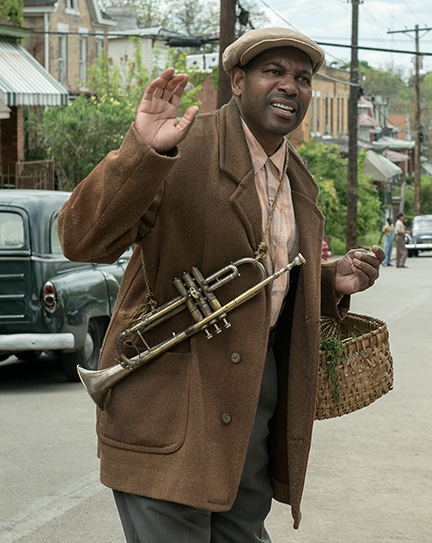Gabriel’s Roles
 |
Offstage for most of the second act, Troy's older brother Gabriel arrives at the play's end to announce Troy and contact "St. Peter to open the gates." Unable to make the trumpet speak (it has no mouthpiece attached) the STAGE DIRECTIONS at the end of the play describe Gabriel dancing and singing (howling?) until finally "...the gates of heaven stand open..." and Gabriel exclaims:
"That's the way that go!" |
So why does Gabriel return here at the end of the play and what role did he fulfill throughout the play? We looked at archetypal or universal themes in the last lesson, but what about characters. Are there archetypal characters as well?
Absolutely!
An archetype is a pattern or model that serves as the basis for different but related versions of a character, plot, image, or theme. Archetypes carry associations with them that help storytellers build meaning. Sometimes, we might associate
Ok, so what are some examples of ARCHETYPAL characters?
Here's a short list:
|
|
Looking at the list above, does Gabriel's character fit one of these archetypes? Not sure? Use these definitions to check your comprehension. |
Discussion Board Assignment: Gabe's Appearances and Meaning
Trace Gabe’s appearances throughout the play. What are the circumstances surrounding each of his appearances (note act, scene, and page number for each appearance). Why has Wilson created a character such as Gabriel? What is his purpose in the play? Respond to two students. Make sure to read others’ posts before you post so that your answers add to the virtual conversation rather than repeating others.
Your post, though, needs to show original thought, so be sure to make arguments beyond what you read. Think of the connections reading strategy → when you write about Gabe, make some text-to-text connections by comparing him to other archetypal characters.
Sometimes students want help and seek online analysis websites. The problem with them is that sometimes the information is misleading (or just wrong). Other times, their words sound so great that students use them and plagiarize.
Skills Lesson: Using research and outside sources in your work
This website: http://www.litcharts.com/lit/fences/characters/gabriel-maxson gives a good overview of Gabriel’s character. Further, it lists all of his entrances. Word of caution: This website names themes by a few words - that are really just the theme category (mothers & fathers). When you write about theme, you must write about the complete idea.
Start by writing down where his entrances are; then find them and form your own opinions. Then, you can decide if you want to read the analysis or not.
NEXT: Lesson 3 Writing